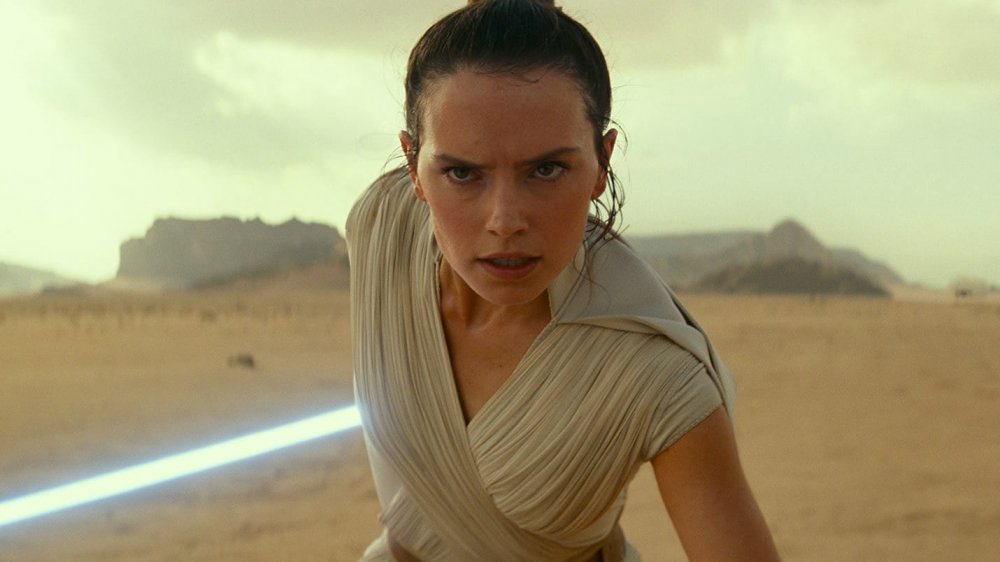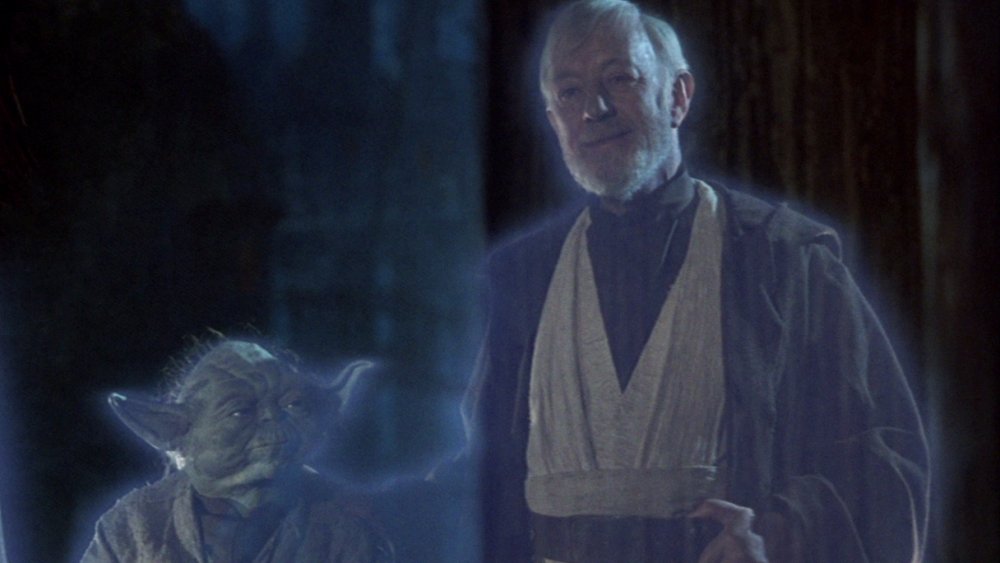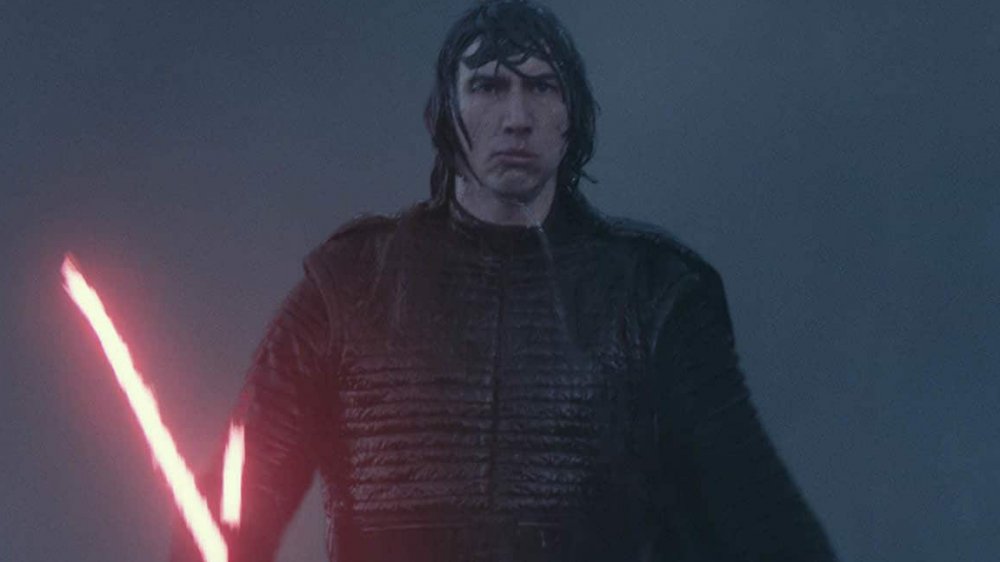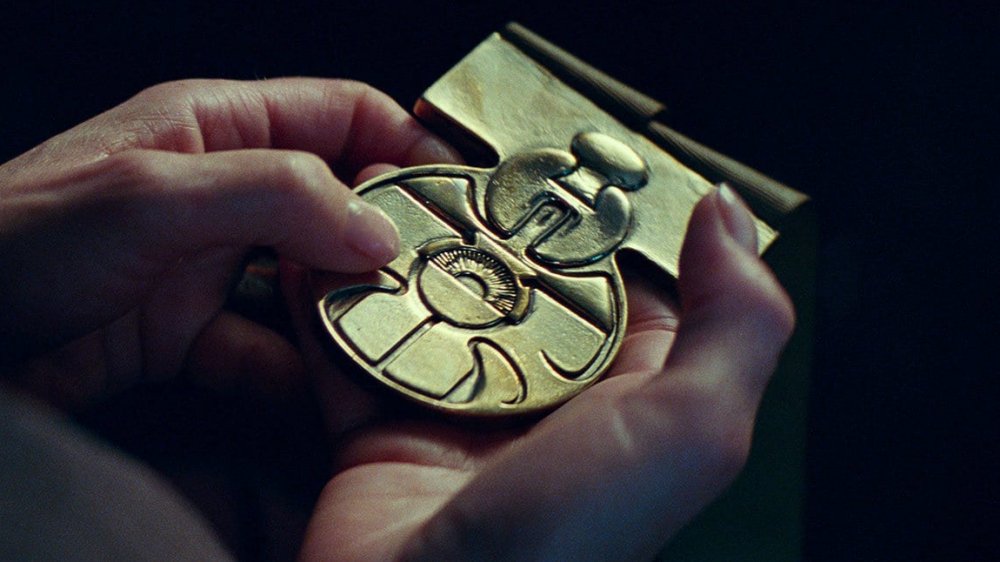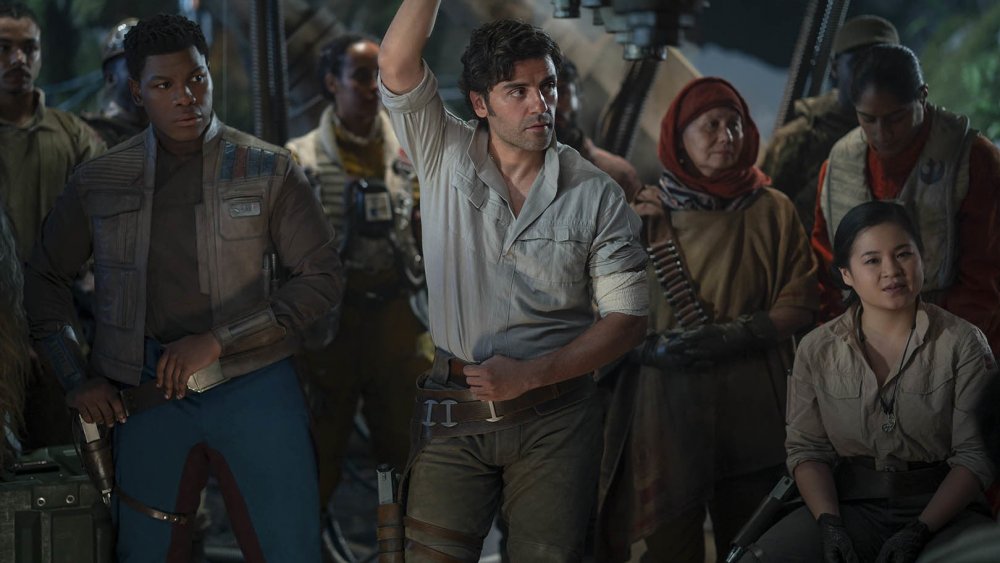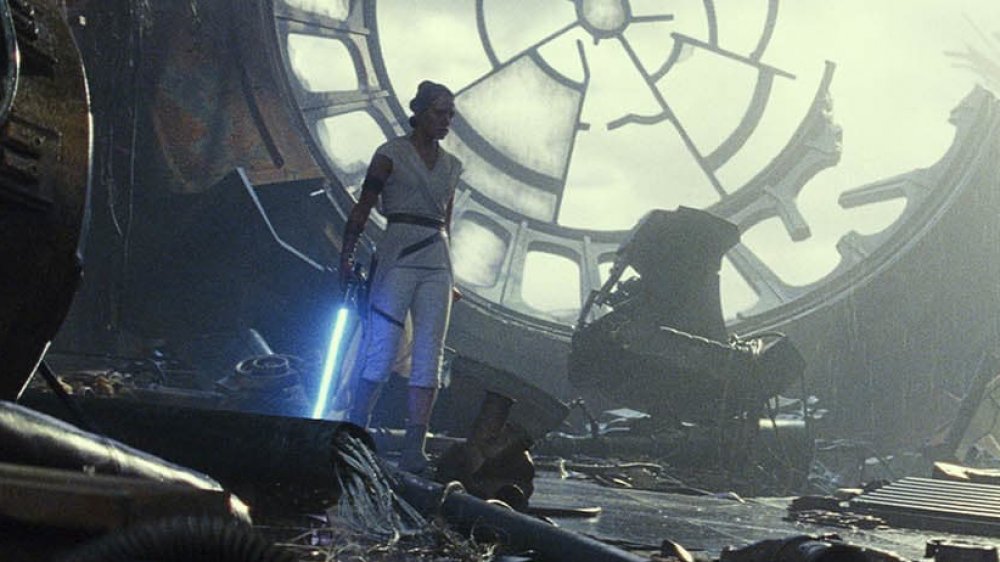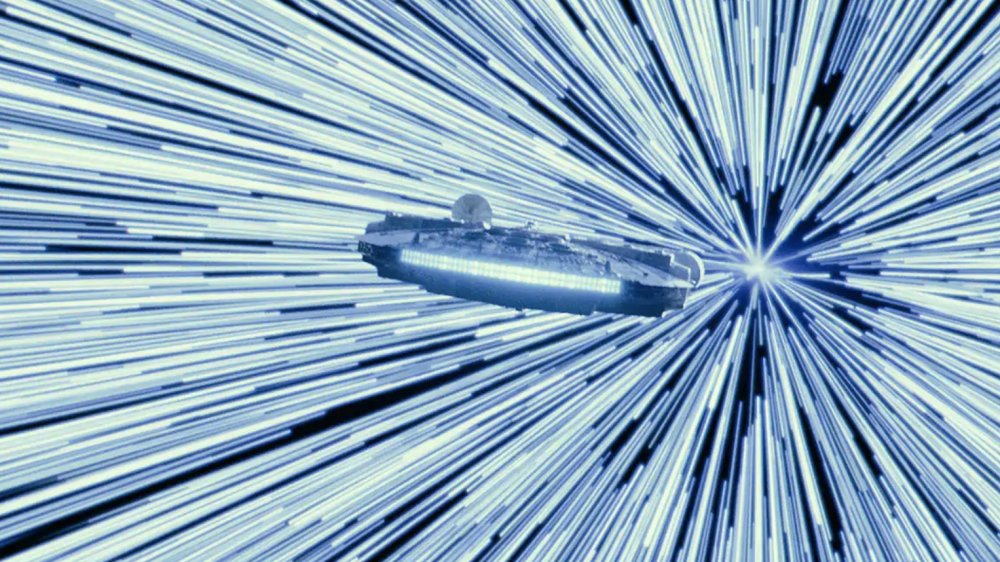The Star Wars: The Rise Of Skywalker Ending Explained
Skywalker has risen, the First Order came in last, and the nine-part Star Wars saga as we've known it for the last 42 years has come to an end. There were clones, ghosts, droids, weird aliens, cantinas, more ghosts, lightsabers, spaceships, stars, wars, and even more ghosts — it had everything you'd want from the epic conclusion to a space opera, plus plenty of other stuff thrown in for good measure.
So with the ninth installment in the Skywalker Saga having wrapped up and our heroes having walked into the twin sunsets, there's only one more thing for us to do — try and wrap our heads around everything that went down in the ending. Now, we've misplaced our Jedi Holocrons and our Sith Wayfinder accidentally got flushed down the toilet, so the best we can do is make some educated guesses about what it all meant. Join us now, as we embark on a spoiler-filled explanation of the ending to Star Wars: The Rise of Skywalker.
Forceful ghosts
For a movie franchise that's generally regarded as science fiction, there sure are a lot of supernatural and probably ectoplasmic beings hanging around the galaxy in Star Wars. Of course, we're used to seeing Force Ghosts by now. Ever since Obi-Wan told Luke to turn off his danged iPhone so he could shoot his torpedos into the Death Star's butt, fans have accepted the fact that when you're strong with the Force, you get to play extra innings as a glowing blue person. And when Yoda himself showed up in Episode 8 to mess with Luke and set an old tree on fire, it became clear that the Force Ghosts in Star Wars were going to do a bit more than dispense wisdom and exposition.
So that's our best guess as to who — or what — might have been in that crowd of creeps hanging around with Palpatine on Exegol at the movie's end: Force Ghosts. Palpatine made a big deal about how all of the Sith were fueling him, and it seemed as though the hooded figures who faded in and out of view during the scenes with the Emperor were some kinds of spectral Sith lords. Meanwhile, Rey's cosmic pep talk at the end of the film came courtesy of Jedi Force Ghosts — and even featured the voice talents of Jedi actors past and present, including Hayden Christensen reprising his role as Anakin Skywalker from the prequel trilogy, among many others.
Ren's redemption
One of the most dramatic plot developments in the film came in the form of Kylo Ren's reversal and transformation back into his previous identity of Ben Solo. His redemption was preordained from the first moment we learned he was Han and Leia's son in The Force Awakens. Not only that, but he's this trilogy's version of Darth Vader, who himself had a rather famous redemption of his own at the end of Return of the Jedi. As such, the chance that he would close out the series as a full villain seemed pretty remote. Even still, Kylo Ren's turnaround might've seemed kind of abrupt...so why and how did he turn to the light?
Even though he ended each film playing the part of the villain, Kylo Ren expressed conflict and doubts about his ability to fully commit to the First Order and the Dark Side. With each film, Ren seemed unable to fully accept his decision to go bad — and in so doing, acted out like an angry baby, slashing consoles with his lightsaber and smashing his helmet out of frustration. So when Leia expended all her life force trying to reach her son one last time — apparently going so far as to pull an Obi-Wan to sacrifice herself for the good of her kid — it may have opened the door for him to actually see the light side again. From there, Rey's sacrifice of her own Force energy to heal the fatal wound she dealt him probably sealed the deal.
Better late than never
Near the very end of the film, Maz Kanata handed Chewbacca a medal, saying that Leia would've wanted him to have it. The moment kind of comes out of nowhere, but chances are good that the folks in your theater were pretty happy when the scene unfolded. If you're wondering why, the answer can be found 42 years in the past.
Back at the end of the first Star Wars film, A New Hope, Han and Luke are awarded medals by Princess Leia in a ceremony that's full of smiles and great John Williams music. But despite having just as much to do with her rescue and the destruction of the Death Star as anyone, poor Chewbacca didn't get jack squat. Chewie's medal neglect has been a sore point for Star Wars fans for over four decades... so it's only fitting that he finally gets his due in the final chapter of the Skywalker Saga. Additionally, the medal was probably the one Leia had originally given to Chewbacca's lifemate Han, which gives the moment even more significance.
Be with me...
So what was this movie about? Well, beyond the obvious answer of "wars... in the stars," this is a movie that pins its emotional core on the idea of togetherness. To lay it out simply, The Rise of Skywalker is about how working together is good, and going it alone is bad. It sounds pretty corny when it's put that way, but the strength of that theme is undeniable.
Think about it: Rey can't succeed without help from Ben Solo, and in the end she relies on the will of all the past Jedi to help her defeat Palpatine. Moreover, Finn and Poe go to great lengths to keep their party together. This is all in stark contrast to the events of The Last Jedi, a movie that also proves the same theme to be true, though it does so in the exact opposite way. When Finn and Rose break off from the Resistance to help Poe undermine Admiral Holdo, disaster follows. And Luke's decision to abandon his sister and the Republic leaves the galaxy open to the rise of the First Order — and, apparently, the resurrection of the Emperor. Meanwhile, Rey and Kylo Ren's connection in The Last Jedi set up their deeper alliance in The Rise of Skywalker, and eventually led to the final destruction of the Empire. That connection is fully realized at the end, when she takes on his family's name of Skywalker and completely embraces her adopted family as her actual one.
End of Empire
So with the end of the First Order, the Final Order, the Emperor, and the Supreme Leader, who's in charge of the galaxy now? If your answer is the Republic, well, you're wrong there too, since they got exploded back in The Force Awakens. It's an easy detail to forget, since we never really got to see what Leia's newly established New Republic could do as an intergalactic governing body, but maybe it's just as well.
The answer to the question of who's in charge is, basically, well, no one. The free planets are free, and maybe a new galactic government will get together to debate trade routes and taxation, just like the good ol' days. Or maybe they won't! Or maybe Rey will decide to take on the role of Empress after all — but she'll be a good one, and she'll rename the Star Destroyers something nicer... like Star Deployers. There's no end to the possibilities!
The future of a long time ago...
The final scene of the film shows Rey burying the two lightsabers that once belonged to Luke and Leia at the Lars family homestead on Tatooine. It's a nice scene that symbolically plants seeds for the future of this franchise in an interesting way. Even though the Skywalker Saga has come to an end, the galaxy is still an awfully big place full of people who'll find connections to the Force, and may end up searching for answers. That may lead them to Tatooine, which could potentially become a holy site to future generations of Force users.
The future of Star Wars as a film franchise is a huge question mark, though we know that Kevin Feige, the architect of the mega-successful Marvel Cinematic Universe, is working on his own ideas for forthcoming Star Wars movies. Whether we ever see Finn, Poe, Rey, or even Lando or Chewbacca ever again remains to be seen. But while those lightsabers may be buried in the sand, it stands to reason that we'll see those legendary weapons from a galaxy far, far away again before too long...
